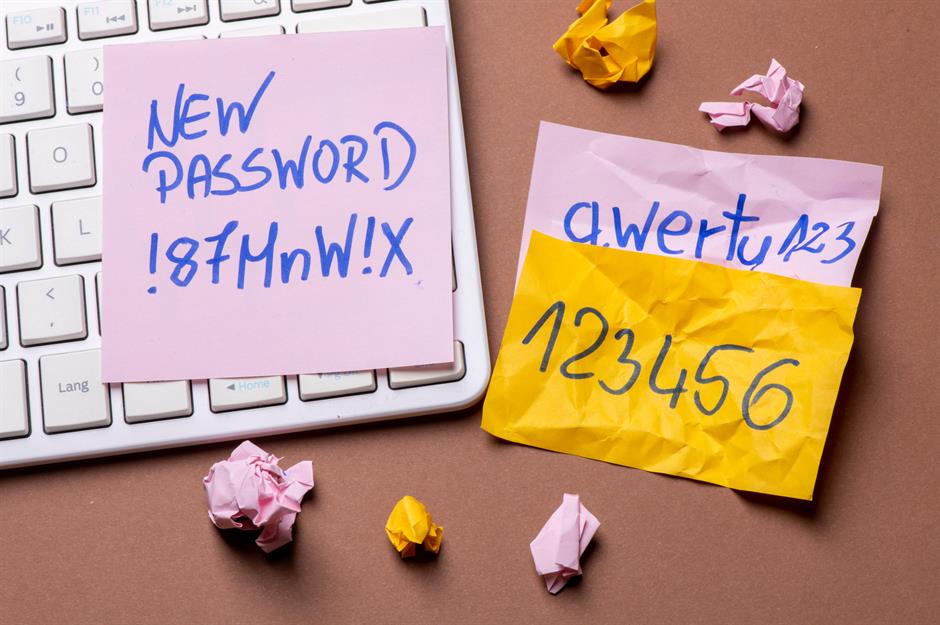Incredible statistics about the average American's working week
The American working week in 20 bite-sized stats

Ever feel as if you’re drowning in emails, struggling to switch off at night, or battling endless computer problems? You’re not alone. According to Statista, nearly 160 million people will be employed in the US by 2022, meaning there are millions of others who are likely feeling the same as you every single day. But how do Americans spend their time at work, and what do they earn for their endeavors? From the number of emails they receive each day to the cost of their lunch, read on for 20 incredible statistics relating to the average American’s working week, and see how yours compares.
The average full-time American works 42.5 hours a week

Due to industrialization, some 20th-century economists believed that the workers of the future would clock-in just two days a week. But that hasn’t been the case. According to the US Bureau of Labor Statistics (BLS), today’s Americans work 42.5 hours every week if they’re in full-time employment, which averages out to eight-and-a-half hours a day. It might sound a lot compared to that two-day week predicted by the economists, but it's actually more tolerable when you consider the staggering 70 hours a week that our 19th-century ancestors worked.
And earns $1,001

New BLS figures also show that the median weekly salary for American employees was $1,001 in the third quarter of 2021. That's 0.7% higher than the median weekly salary in Q3 2020 – but not everyone is enjoying their fair share of the increase. On average, women received just $916 a week in Q3 of 2021, while men could expect to receive more, at $1,100. Black and Hispanic professionals received less than white workers, while Asian workers earned slightly more than average, with women taking home $1,189 a week and men $1,414.
And spends over 4.5 hours traveling to work

According to 2019 estimates from the US Census Bureau, the average American’s commute is now 27.6 minutes each way, an all-time record high. Over the course of a week, this adds up to a total of 276 minutes (four hours and 36 minutes). Professionals in New Jersey (31.7 minutes), Maryland (32.9 minutes), and New York (33.3 minutes) have the longest commutes.
And spends around $50 commuting

The cost of the typical commute can depend on various factors, including distance traveled, mode of transport, and home state. According to the Citi ThankYou Premier Commuter Index, the average American employee spends $2,600 a year getting to and from work. If we divide this by 50 working weeks, that balances out to $52 a week. Data from Business Insider reveals that West Virginians have the most affordable commutes, with an annual spend of $2,003.81; at the other end of the spectrum, employees in North Dakota are spending out a whopping $5,059.11 each year.
And receives 605 emails a week

So just how many emails are we receiving? According to research quoted in the Guardian, the average office worker received 121 emails a day in 2019, which works out to 605 across the working week. These figures included spam and marketing messages, as well as communication from colleagues. Studies have shown that 86% of professionals prefer email over other forms of contact. Many analysts believe we could see even higher volumes of emails land in our inboxes over the coming years.
And spends over 29 hours a week checking their email

On a typical workday, the average American will spend 209 minutes checking their work email and a further 143 minutes checking their personal email. That’s a staggering 352 minutes, or five hours and 52 minutes, a day in total. It adds up to 1,760 minutes, or 29 hours and 18 minutes, across the working week. According to the 2016 Adobe Email Usage Study, workers spent a weekly total of 2,325 minutes, or 38 hours 45 minutes, checking their inboxes, meaning the amount of time we spend on email has potentially decreased in recent years. That said, it still represents a significant portion of the working day.
Half of workers get distracted after 15 minutes

A study quoted in Time found that 50% of American employees become distracted just 15 minutes after they start their working day, with noisy colleagues and overflowing inboxes helping to hinder our ability to concentrate. Meanwhile, over half (53%) of employees in the same study admitted to wasting at least an hour per day, or five hours per week, due to pointless disruptions.
Office workers spend an average of almost 23 hours in meetings

Data shared by the Harvard Business Review in 2017 revealed that office workers spend almost 23 hours a week in meetings. That's a significant rise from the 1960s, when meetings took up less than ten hours of an employee's week. Some believe that the pandemic has helped to accelerate this increase. According to a study conducted by Microsoft, remote employees now spend 10% more time in meetings than they did prior to COVID-19 and the introduction of working from home. However, it's not all bad: research conducted in 2020 by Harvard Business School and New York University found that meetings are actually 20.1% shorter than they used to be.
The average worker uses 35 business-critical apps

How many apps do you use each day? A 2018 survey by software company Pegasystems found that the average employee uses 35 "job-critical" apps at work, ranging from calendars and customer databases to email servers and social media sites. It might be a lot to keep track of, but it's probably only a small portion of the programs your company has access to overall. Research conducted by Okta, Inc., also in 2018, found that the average business relies on 129 apps in total.
And switches between apps 5,500 times a week
Switching between 35 apps takes time and, according to Pegasystems, we flick between them upwards of 1,100 times a day, or 5,500+ times a week. Unsurprisingly, the worst culprit for this is email. The report found that the average employee checks their email every six minutes, a distraction that is proven to temporarily lower IQ by around 10 points.
And has 191 passwords

With so many apps to keep on top of, it's little wonder that the average employee has more passwords than ever. Statistics shared by password management system LastPass in 2017 found that the typical worker has 191 passwords, and this number is likely to only have increased during the pandemic. The same dataset also found that employees type out their usernames and passwords an average of 154 times every month in order to gain access to apps and websites.
And makes 4,225 keyboard errors a week

We make an average of 845 keyboard errors every day, adding up to a staggering 4,225 mistakes per working week. Most of these errors are minor typos that can be easily corrected, but others can be more serious. From tech downtime to data breaches, human error can result in all kinds of issues, and is the leading cause of accidents in the workplace. It's not all bad news though. According to Pegasystems, we're more likely to make errors if we're distracted by different apps. In short, by resisting our urges to flick between programs, we can potentially boost our focus and reduce our risk of making mistakes.
Working parents pay an average of $216 a week for childcare

In the US, childcare for an infant aged five years or under costs $216 a week on average. Working parents can expect to spend around 17% of their income on childcare, although this varies from state to state. In South Dakota, for example, parents typically part with 10.90% of their income to pay for childcare, while their counterparts in Washington DC spend out an incredible 26.3%.
Over two-thirds of office workers eat lunch at their desk

Do you dine 'al desko'? If so, you're not alone – a staggering 67% of Americans admit that they eat lunch at their desk, according to the Huffington Post. Although lunch meetings are unavoidable at times (with the prospect of a free lunch even proven to boost attendance), the main reason for having a so-called 'sad desk lunch' is the fear of stigma. A 2019 survey carried out by Tork, the American napkin company, found that one in four millennials worry that their boss would look down on them if they took a proper lunch break.
The average worker spends $53 a week on lunch

When they're not snapping up the free food at lunch meetings, workers are face with a choice: do they want to eat out, bring in lunch from home, or grab themselves a takeout? The option they choose has a big effect on their bank balance. According to a 2021 study by Visa, the average American spends $53 on lunch a week, which is the equivalent of $2,746 a year. For those of us who regularly dine out at restaurants, this number balloons to $9,000 a year. Those business lunches soon add up then...
42% can work from home at least once a week

The rise of remote working has been one of the pandemic's biggest legacies. According to the BLS, 42% of Americans worked from home on any given day in 2020, an increase from 24% in 2019. Separate studies suggest that remote employees work longer hours than their office-based colleagues, clocking up an extra 1.4 days per month.
Almost two hours a week is lost to IT issues

Technology might be making the workforce more productive on the whole, but it isn't always as helpful as it could be. A 2016 survey by Robert Half Technology discovered that the average American employee spends 22 minutes a day dealing with IT-related issues. That's one hour and 50 minutes every single working week, or roughly two whole weeks every year. These figures were obviously collected before the pandemic, when issues were more likely to be related to a company's IT infrastructure rather than home broadband connections, so we can only imagine how they've increased since March 2020...
The average workers spends just over 3 hours a week socializing

During the typical working week, the average American adult spends just 38.4 minutes socializing and communicating a day, which totals three hours and 12 minutes per week. Data from Statista suggests that we're socializing less and less. Back in 2012, people socialized for an average of 44.4 minutes a day, six minutes longer than we do today. The main reason for this decline is likely to be the pandemic; after all, with the rise of remote working and the closure of bars and restaurants, it was much harder to be social in 2020.
The average office worker sits down for 75 hours a week

Americans spend more time sitting down than anyone else – and office workers are the worst culprits of all. According to research published by Forbes, the average office worker in the US sits down for 15 hours a day at work and at home. That's 75 hours, more than three full days in total, over the course of the working week. But it's not all bad. Although anyone who works from a computer is at risk of leading a sedentary lifestyle, studies have shown that remote workers spend less time sitting down and manage to exercise more often than office-based employees.
And the average worker spends four hours a week worrying about work

Surveys have found that the average American employee spends four hours a week worrying about their job, which is the equivalent of spending an extra day at work every fortnight. According to American Express, some of America's biggest workplace worries include whether their paycheck will be paid on time; what their boss thinks of them; long commutes; and whether they have a future at their company. In fact, an article in the Harvard Business Review claims that "in general, people leave their jobs because they... don't see opportunities for promotion or growth".
Now discover America’s most shocking financial facts
Comments
Be the first to comment
Do you want to comment on this article? You need to be signed in for this feature
Most Popular
Features How Michael Jackson's children boost their bank balances